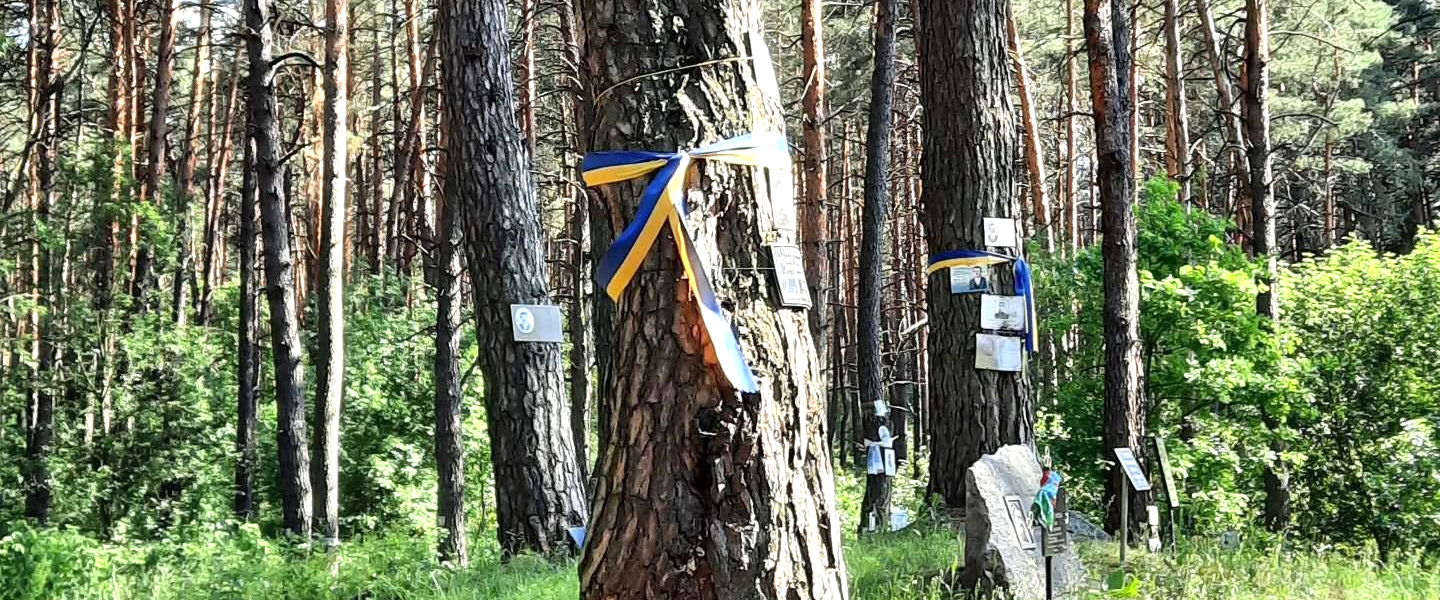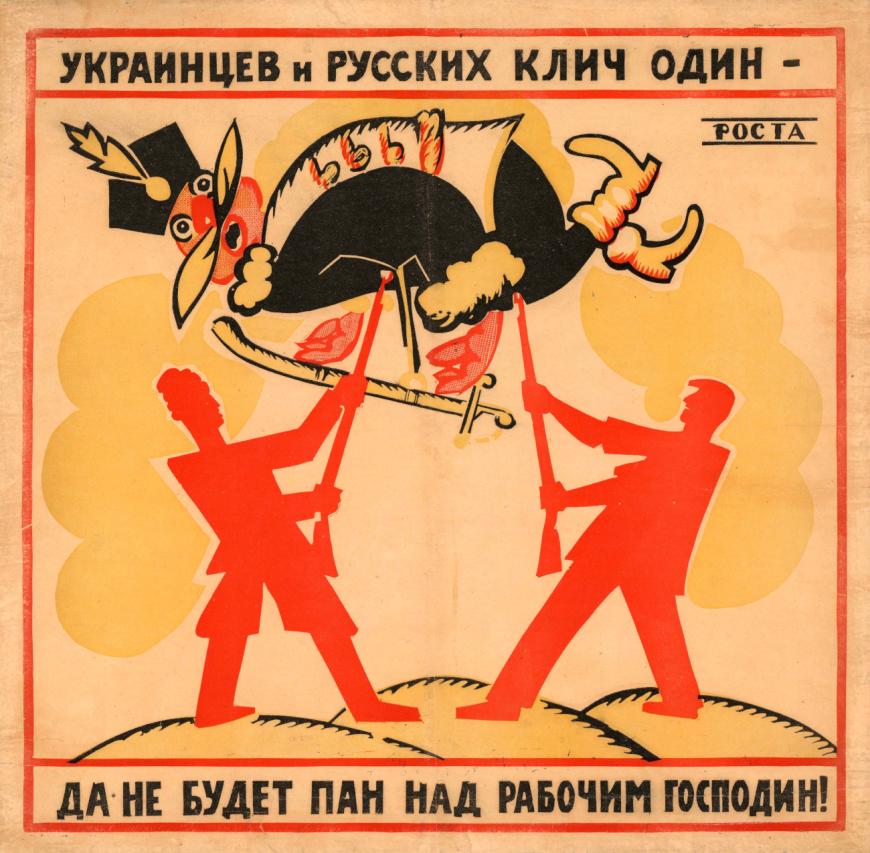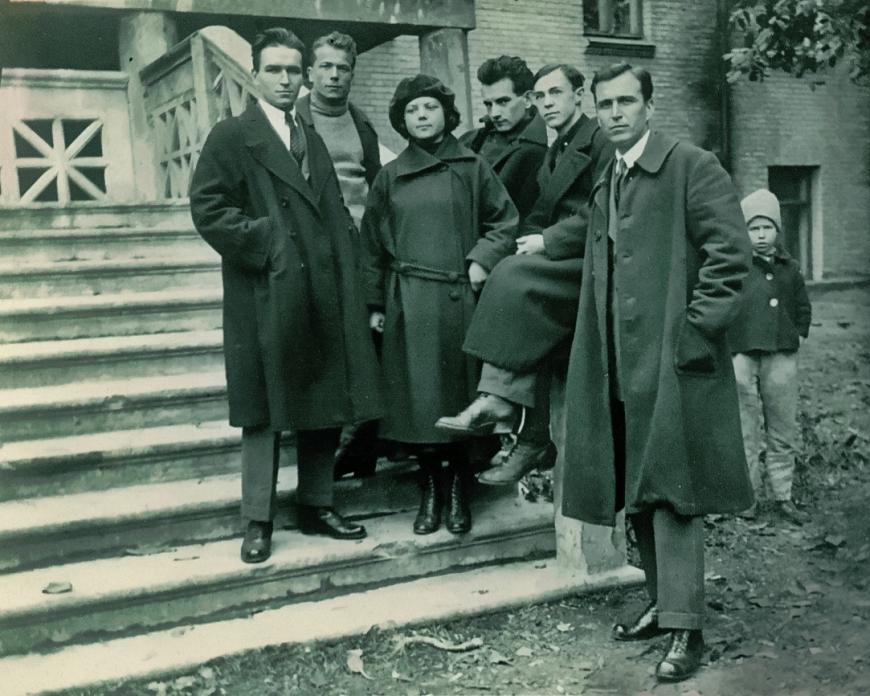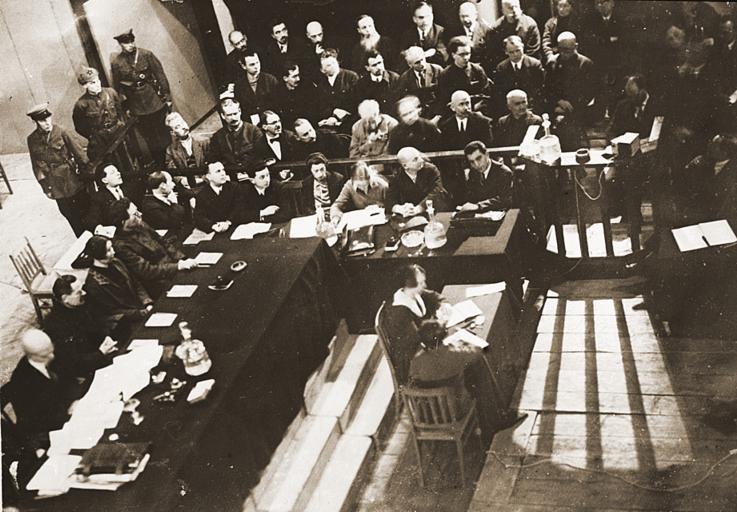published: 29 May 2024

Soviet era repressive “national operations” in Ukraine
Soviet power carried out policies of forced Russification in Ukraine, as well as a number of repressive and murderous measures targeting ethnic and national groups, in particular during the Great Terror of the 1930s. Ukraine’s minorities - Jews, Poles, Greeks, Germans and others - were subjected to varying degrees of oppression. In the parlance of the Soviet police, campaigns targeting specific nationalities were known as “national operations”. We have translated the text of a presentation Ukrainian researcher Roman Podkur gave in December 2023 at a conference organized by Memorial France and titled “Imperial Violence”.
Before I begin to analyze repressions on the basis of nationality, I want to note that since 1920 the territory of the Ukrainian People's Republic, proclaimed in November 1917, was occupied by Soviet Russia. Soviet Ukraine, created by the Bolsheviks, was national in form but not in substance.
I use the term “national operations” to describe repressions against national/ethnic communities living in Ukraine. By that I mean, broadly, the variety of measures deployed by the Soviet Party apparatus, courts, prosecutors, and state security agencies aimed at denationalizing, russifying, and “Sovietizing” the non-Russian majority of Soviet Ukraine throughout its existence.
For the communist regime, as it took power in Russia and occupied and annexed the Ukrainian People's Republic, the “national question” immediately became a matter of manipulation. The right of nations to self-determination proclaimed by the Bolsheviks was always subordinated to the principle of the dictatorship of the proletariat, which served as a basis for a new type of statehood.

In the early 1920s, the Russian Bolshevik regime’s chief opponent in Ukraine was the national insurgent movement, which the Bolsheviks themselves labeled as “Petliurian” or simply “Ukrainian bourgeois nationalism”. After the second half of the 1940s, this movement was stigmatized by Soviet authorities as “Banderian Ukrainian bourgeois nationalism”.
In contrast to this insurgent movement of the 1920s, Bolsheviks in Soviet Ukraine in 1923 initiated a process of “indigenization”, or Ukrainization of the bureaucratic system, with the Ukrainian language becoming increasingly prominent.
However, under the slogan of free development of nations, the Bolsheviks spread communist ideology and the ideas of Russian Bolshevism among Ukraine’s population. In so doing, the Bolsheviks acted against the idea of an independent Ukrainian state.
“Indigenization” also concerned Jewish, Polish, German, Greek and other traditions and languages in areas where those communities were prominently present. Departments for minorities affairs were created in the Party's district committees in order to implement and control “indigenization”.
The process of “indigenization” did indeed contribute to the development of national identity and inspired a surge in the development of Ukrainian and other national cultures. Ukraine-centered groups emerged in various fields. The idea of state independence, including Soviet independence, reappeared among the intelligentsia. This was interpreted by Stalin as a manifestation of “Ukrainian bourgeois nationalism” and an attempt to break up the USSR. That’s why the repressive apparatus fabricated criminal cases against Ukrainian-centered groups. Some of them were “show trials” to intimidate other supporters of Ukraine’s independence. One impact of the “indigenization” policy was that Ukrainians, as well as members of other groups, were identified and eventually killed. In the mid-1920s and 1930s, state security agencies targeted citizens who identified themselves as representatives of a particular nationality rather than the “Soviet nation”.

Eliminating the Zionist political movement in Ukraine was a separate strand in the repressive policies of the early 1920s. According to Karl Karlson, deputy head of the GPU (secret police, antecedent of the NKVD and the KGB) of the Ukrainian SSR, the difficulty stemmed from the fact that three-fourths of the Jewish population in Ukraine supported this movement, so the physical elimination of Zionism (through arrests) proved to be the targeting of an ethnicity as such.
In the mid-1930s, a course was set for the elimination of certain « national » groups, whether Ukrainian or of other communities. . For example, in industrial cities, , Ukrainian schools were Russified, while Polish, Jewish, Greek, and German schools were Ukrainized under the pretext that there was a low demand for education in those languages. Ukrainian, Polish, Jewish, and Greek intellectual and artistic institutions were disbanded.
Repressive policies towards national groups went beyond the cultural and educational sphere. Thus, in 1935—1936, mass deportations of people from the borderland were carried out in order to create a kind of “political security zone”. Poles, and citizens deemed politically unreliable, regardless of their origin, such as Ukrainians, Germans, and others, were deported from Ukraine’s border areas..
During the Great Terror of 1937—1938, Joseph Stalin’s perception of the so-called “fifth column” included ethnic groups that were associated with countries hostile to the USSR (e.g., Poles and Germans), as well as groups that could potentially secede from the USSR.
Whereas the “Kulak Operation” (repression of supposedly wealthy peasants) included target numbers and limits set on imprisonments and executions, no such caps existed for ethnic repressions, meaning that regional NKVD offices were free to arrest any number of people on those grounds. The heads of regional NKVD offices gladly took the opportunity to prove their political loyalty by increasing the number of arrests. For example, due to the « lack » of Poles in the region, the Donetsk police department began arresting Ukrainians as part of a “Polish operation”, because Ukrainian and Polish surnames were similar.
It should be emphasized that, while these “national operations” focused on many different ethnic groups, Russians as such were not one of them.
A special department of the NKVD was assigned a duty of baseline control. Its officers checked the lists prepared by regional NKVD offices before sending them for approval to the two-men committee of the Prosecutor General and the People's Commissar of Internal Affairs. After September 1938, the handing out of sentences was delegated to regional troikas (three-person committees with extraordinary judicial powers), leading to a spike in arrests. The rate of death sentences varied by ethnic group from 70 to 75%. Formal criteria for arrest and prosecution included: participation in political national parties or public organizations, having relatives abroad, having traveled abroad, and communication with an “enemy of the people”.
Using ethnicity as an aggravating pretext for repression occurred in other Soviet terror operations. During the “Kulak Operation” special targets were set for prosecuting members of parties opposed to the Bolsheviks, including nationalist ones. These were “Petliurists” (military personnel, officials, supporters of the Ukrainian People's Republic, insurgents, etc.) and people who had been members of Ukrainian socialist parties and Ukrainian-centered public organizations in the early twentieth century. Indeed, Russians were arrested as political opponents of the Bolsheviks, including members of Russian political parties and members of the Imperial or White Army. But I do not detect an ethnic aspect here.

The struggle against the so-called “Ukrainian bourgeois nationalism” continued during and after World War II. The main opponents of the Soviet government were the Organization of Ukrainian Nationalists and the Ukrainian Insurgent Army who were committed to the cause of Ukrainian independence. This was seen in the USSR as treason, and members of these organizations were thus criminalized. According to the Criminal Code, not only participants but also their family members were subject to punishment. This resulted in the deportation of tens of thousands of Ukrainian families from western Ukraine. Tens of thousands of independence fighters were killed.
It is significant that, in the opinion of the USSR leaders, Nazi collaborators were seen as less dangerous to the communist regime than participants in the national movement, who were called “nationalists” in the USSR and qualified as particularly dangerous political criminals.
They were among those sent off to so-called Special Camps. This distinction between the guilt of collaborators and so-called nationalists can be traced back to the work of Commissions tasked with reviewing cases of people convicted of counterrevolutionary crimes, which began operating in the mid-1950s. For instance, Nazi collaborators found among police officers, mayors, and others involved in the murder of civilians were granted amnesty and freedom. Soviet leaders were willing to regard their actions as a way to adapt to extreme circumstances. Their motives were clear, understandable, and boiled down to human survival. There was no political motive in their actions. However, this logic was not applied to members of the Ukrainian national movement. Active figures of this movement were not released from detention until the 1960s and early 1970s and even then, their rights were severely restricted. Insurgents of the Baltic states were treated in the same manner.
Dissidents in 1950s-1980s period proved to be dangerous for the communist regime. They had different ideological backgrounds, ranging from the Marxist-Leninist doctrine to Ukrainian nationalist ideology. However, they were all united in their understanding of a need for change, the transition from formal to real Ukrainian statehood, the end of Russification, the advancement of real democratic values, and the satisfaction of the national needs. They emphasized that power had effectively been seized by the Party bureaucracy, that the people were disenfranchised. Numbering just a few hundred, dissidents in Soviet Ukraine were far from numerous, but they maintained a tradition and developed new ideas about the principles of Ukrainian statehood.
The communist system’s “national operations” were aimed at denationalizing and Russifying Ukrainian society and depriving it of its capacity for state-building. This policy targeted Ukrainians as well as other ethnic communities in Ukraine.
The communist regime’s ideal was the “Soviet person”. On the one hand, nationality was considered an anachronism that belonged in museums. On the other hand, the “Soviet person” was seen as a “Russian Soviet person”. In the unspoken hierarchy of cultures of the USSR, it was the Russian language that was recognized as the “high” or “standard” language; hence the Soviet narrative of casting the Russian people as an “older brother” to all other peoples within the USSR. Soviet propaganda covered up repressive policies toward nationalities with slogans of internationalism and false brotherhood.
Despite this, Ukrainian society remained attached to the idea of creating a Ukrainian state throughout the Soviet era, from the 1920s to the 1980s. This idea existed for almost 70 years in various forms under conditions of repressive pressure and mass-Russification.
After the collapse of the Soviet Union in 1991, the opening of a window of opportunity was not sudden nor accidental for Ukrainians, Lithuanians, Latvians, Estonians, and other peoples who found themselves in the USSR or the so-called “socialist camp”. Various economic and political reasons, including the long struggle for independence, had led to this opportunity.
